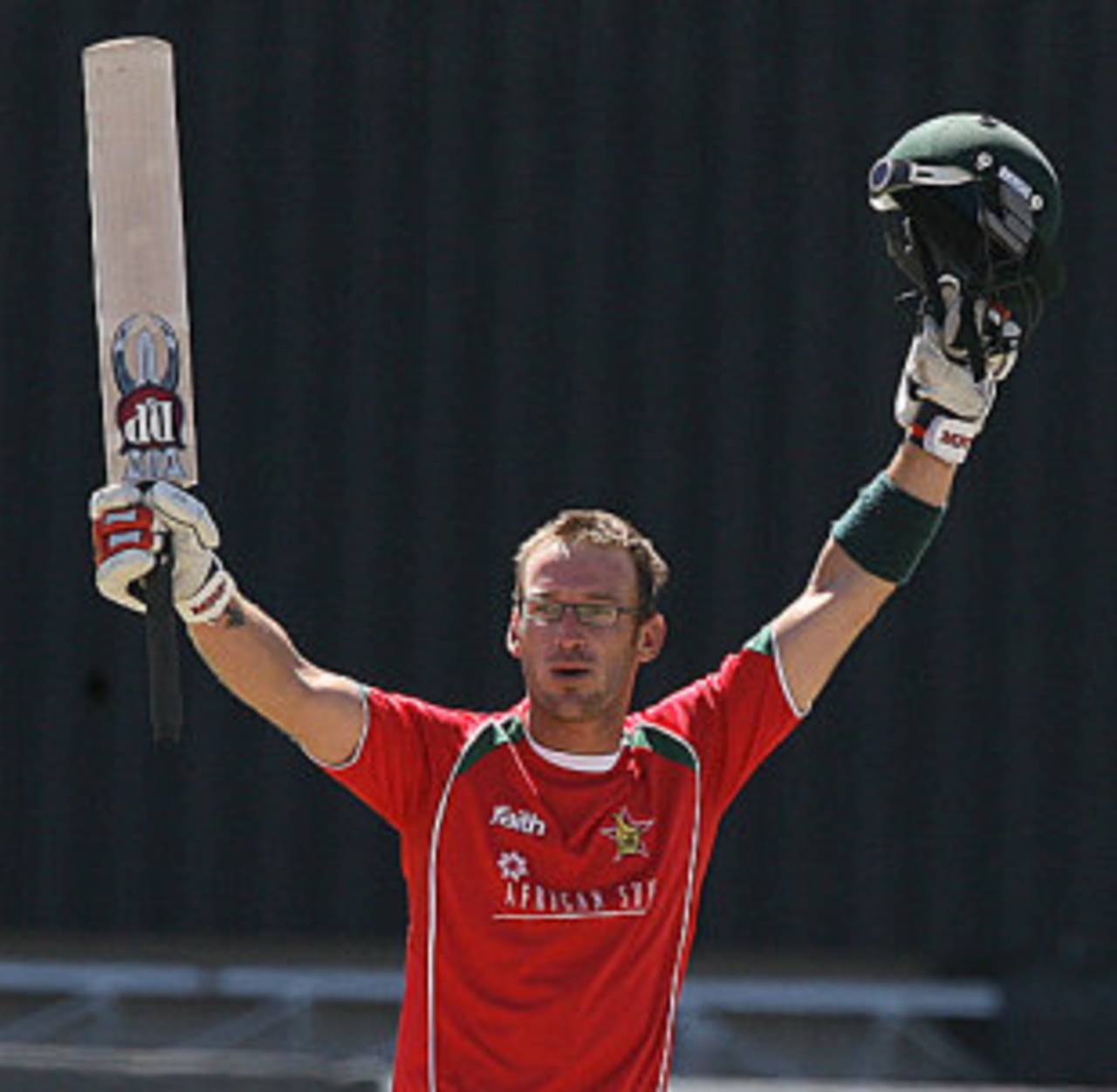For the last five years the end-of-year report on Zimbabwe has grown gloomier and gloomier. Twelve months ago Steve Price wrote that just
keeping the game alive against the backdrop of political chaos represented a major achievement.
And yet, a year on there are finally signs that a corner might have been turned. There's a long way to go, especially on the field, where half a decade of neglect cannot be turned around in a few months, but there are glimmers of hope.
The changes have largely been made possible by the improvement in the country's political fortunes. Zimbabwe, so long an international pariah, has started to rebuild, although the situation remains fragile, and if Robert Mugabe has one of his notorious mood swings then the dark days of 2007 and 2008 could return in weeks.
But for now, Zimbabwe Cricket, berated by many, including me, for years, deserves credit for a number of initiatives, the main one being a
complete revamping of a tattered and discredited domestic structure. The old system has been swept away and heavily politicised provinces replaced with five new self-contained franchises. Time will tell how independent they are, but it's a start and the early signs are promising.
That change was allied to a decision to embrace the country's players, including those who had been at the heart of the battle with the board, and many
returned as either players or
coaches. Perhaps the biggest sign of returning normality was the sight of overseas cricketers such as Chris Silverwood and Steve Tikolo turning out for the franchises.
Internationally there was little to write home about. With fixtures hard to come by, the year was spent playing Bangladesh and Kenya. The results highlighted Zimbabwe's status as being too good for Associates and way short of being able to mix it with the big boys. Only
four of 14 ODIs against Bangladesh were won, while only
one of 10 against Kenya was lost. The three ODIs against Full Members resulted in comprehensive defeats.
Until the on-field results improve, talk of Zimbabwe returning to Test cricket is premature. Unfortunately they were a notable absentee from the ICC World Twenty20 - a competition in which they bloodied Australia's noses
in 2007 - because of political tensions between England, the hosts, and the Mugabe regime.
Another reason was that Peter Chingoka, ZC's chairman, who has been in situ for almost two decades, was banned from the European Union as well as Australia and New Zealand. That caused a few dicey situations as the ICC sought a balance between backing one of its own and not risking a major standoff over someone increasingly hard to support. Common sense prevailed and Chingoka appeared to become increasingly marginalised even in his own country, handing over day-to-day control to chief executive Ozias Bvute, who embarked on a largely successful media charm offensive.
The ICC commissioned a fact-finding report from Julian Hunte, the head of the West Indies Cricket Board. The irony of someone whose own board remains a bigger shambles than the one he was supposed to be advising on caused more than a few wry smiles. The end result was the common-sense move to include a Zimbabwe side in the
ICC Intercontinental Cup, as well as a number of other supportive moves from Full Members. Sadly, that generosity did not seem to spill over to neighbours South Africa, who insisted on being paid almost $100,000 to host two ODIs against the Zimbabweans in November.
New kid on the block
Twenty-year-old fast bowler
Kyle Jarvis, who represented Zimbabwe at the Under-19 World Cup in 2008, was brought straight into the national side and showed enough promise to suggest he could be a feature of the team for some time. Quick if raw, he should benefit from guidance from bowling coach Heath Streak.
Fading star
It's hard not to feel for
Tatenda Taibu, who was left keeping Zimbabwe's head above water, often almost single-handed, during the dark days. His talent as a keeper-batsman is not in doubt, but his fortunes off the field have sent his career into reverse. Too often he was missing from the side because of off-field rows. He
refused to play in Kenya because his kit had been left in Bangladesh, and was then slapped with a
10-match ban after admitting he lied to a Harare court when accused of assaulting a ZC employee.
High point
Returning from a three-year self-imposed exile,
Charles Coventry smashed an
unbeaten 194 against Bangladesh in August, equalling the world record for the highest score in an ODI. His previous best in any format had been 106. Perhaps it underlined Zimbabwe's weaknesses that despite his innings boosting his side to a post-300 total they were easily beaten.
Low point
The
final ODI of the year, against South Africa, was almost like watching the Zimbabwe team in the dark days of two or three years ago. South Africa eased to 331 for 5 without ever breaking sweat and then Zimbabwe all but waved the white flag as they were bowled out for 119 in under 35 overs. If anyone who matters had been watching - and the banks of empty stands suggested few were - it would have reminded them how far Zimbabwe have to go.
What 2010 holds
A real watershed, both on and off the field. David Coultart, a minister in the power-sharing government, is likely to turn his attention to cricket, but whatever happens, it has to be hoped it won't deflect too much from the advances made in 2009. With experience back on the playing and coaching side, the national team needs to start producing more consistent performances to back the goodwill the international community has for it.

